The Curious Rise and Spectacular Crash of the Alliance of American Football

This story appears in the May 6, 2019, issue of Sports Illustrated. For more great storytelling and in-depth analysis, subscribe to the magazine—and get up to 94% off the cover price. Click here for more.
As a cofounder of the Alliance of American Football, which launched in February as a spring alternative to the NFL, Charlie Ebersol could come and go wherever he pleased around the startup league. And so there he was on March 31, wandering around the visitors’ locker room at the Alamodome, where the Arizona Hotshots had offed the San Antonio Commanders 23–6, soaking up the energy as Hotshots players belted out their adopted theme song: “Shots! Shots! Shots-shots-shots. . . .”
At 36, Ebersol, with his tightly manicured scruff and sanguine smile, had already directed a 30 for 30 doc (This Is the XFL, about his father Dick’s 2001 football flop) and been placed by The Hollywood Reporter atop a list of the most powerful players in reality television. Whether or not he understood it yet, however, this was not his highest moment.
Amid growing speculation that Ebersol’s new league was on shaky ground, the Hotshots had flown to Texas in Week 8 on a plane much smaller than the one they were used to. On arrival they found their hotel space so inadequate that the offense did its pregame walkthrough in the parking lot. Across the league, employees were feeling a similar pinch. Nonessential personnel were increasingly barred from traveling at all. Work computers were suddenly inventoried. One player even recalls getting a notification on his team communications app, warning against taking expensive bottles of Cholula hot sauce away from the dining area. Now an impending doom was making its way to the media.
With this in mind, Hotshots linebacker Kaelin Burnett approached Ebersol. “Hey, Charlie,” he asked, “should I show up on Monday?”
Ebersol half-laughed. “If you want to get paid.”
However you cut it—even if you consider the Alliance’s then-ongoing attempts to woo owners of future franchises, like rapper Eminem in Detroit—this was misplaced optimism. Weeks earlier, with funds depleting rapidly, Ebersol had sold controlling interest in the league to billionaire Tom Dundon, owner of the Carolina Hurricanes, who promptly removed Ebersol from a voting seat on the board of directors, leaving him with little say in the AAF’s fate. Still, here Ebersol was reassuring an employee. “You’re all going to be fine.”
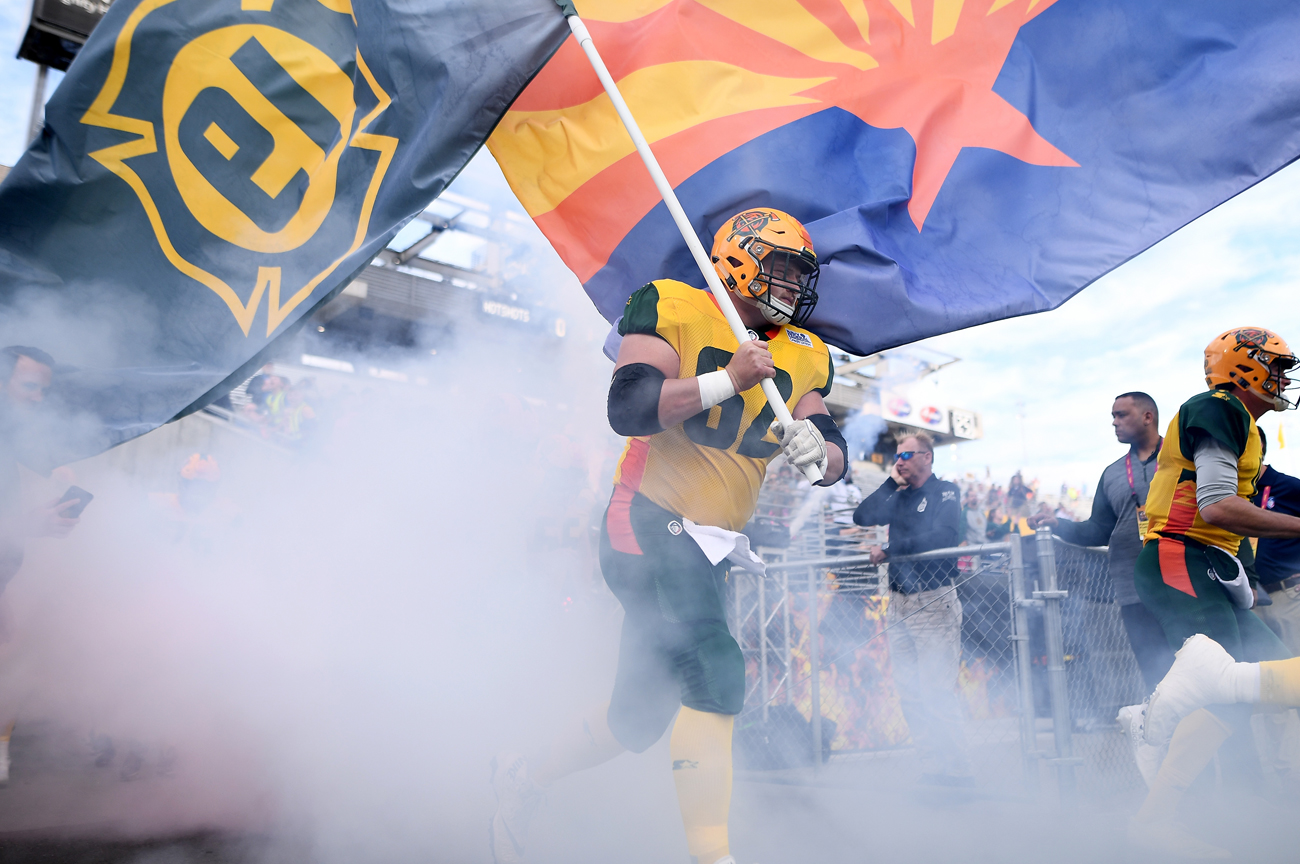
Three days after that game in San Antonio, with Dundon having already spent $70 million to keep the Alliance alive, the new chairman cut off his cash hose and the league suspended operations, immediately freezing the workdays of 940-plus employees. Within weeks the AAF would file for Chapter 7 bankruptcy, claiming some $11 million in assets against $48 million in liabilities. Cash on hand: $536,160.68.
As word of the crash came down on April 2, players scrambled to book their own flights home. Others, some of whom had literally crammed their kids’ cribs into hotel rooms, searched for places to stay. In the mayhem, one Hotshots player texted a friend on the Memphis Express to ask if he was O.K. The reply: “This feels like the Fyre Festival.”
If only it were that simple.
It would be easy to paint Ebersol as the naive hotshot in over his head. Or Dundon as the league’s heartless executioner. The whole story, though, is far more complex. Conversations with more than a dozen people connected to the operation (most of whom asked not to be identified as they sought new employment) paint the picture of a corporate drama straight from the white-knuckle world of Silicon Valley startups. Of questionable funding that would suddenly dry up, and an early investor allegedly wrapped up in shady banking practices. Of secret software that promised to change sports gambling as we know it. Of players, coaches and execs serving as stagehands for the real grand design, a company that would use live football to experiment with and eventually sell off its technology—or, as one AAF engineer put it: a “petri dish for the NFL.” And a “boon for gambling companies.”
Who is to blame? A better question might be, What the hell was the AAF?
The vision laid out by Ebersol and cofounder Bill Polian was built around one core goal, that they become necessary to the pro football ecosystem, or at least valuable enough to exist as an offseason pacifier for what they calculated to be “millions” of fans who craved live football after the Super Bowl each February.
Games would be faster (under 21⁄2 hours), safer (no kickoffs), more transparent (live looks into officiating decisions) and more interactive (through gambling tech). The league would attract talent with standard three-year contracts, built-in raises, postcareer scholarships and bonuses that could be earned through stellar play and community engagement. Profit, it was projected, would come after three years, a slow-burn investment in hopes that the AAF would eventually become a sought-after television property (even if at first the league paid to be broadcast, not the other way around), that individual franchises would become attractive enough to sell and, crucially, that the tech they developed and showcased would become desirable enough to license.
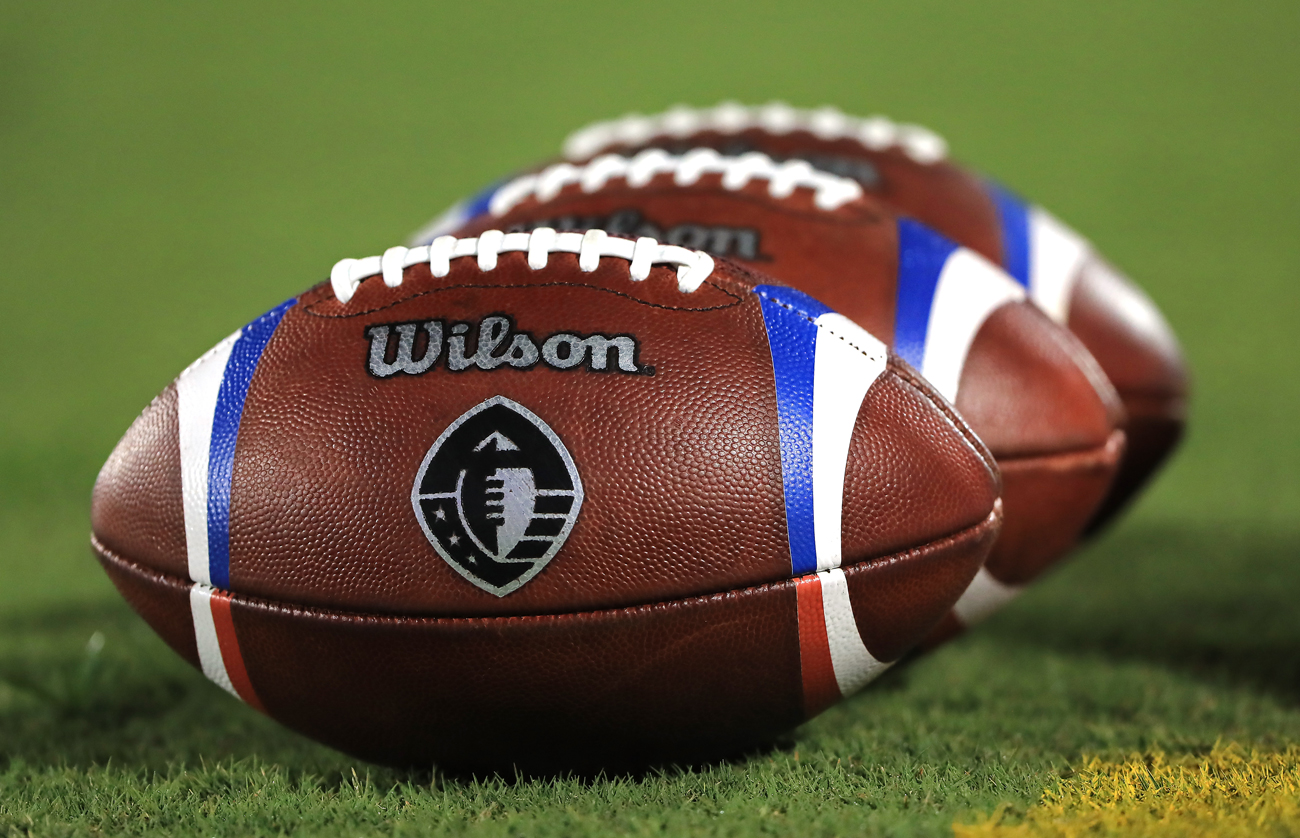
About that tech. Last July, half a year before a snap of football was played, a small number of early-hire employees hopped on a video conference call to preview an artist’s rendering of the technology their outfit hoped to develop. First they were shown a smartphone, which in this demo displayed a Steelers game shot from a low SkyCam angle, playing out on a large video tile in the center. Flanking that were four smaller tiles, each showing the same action, zoomed in on an individual player. Touching a player’s tile brought up a display at the bottom of the screen where you could view his energy bar, showing his level of fatigue, or engage in a variety of gambling-type activities. Probabilities for the upcoming play popped up, and the user could wager “points”—an effort, at least initially, to distance the project from actual gambling—on, say, whether the Steelers would run or pass, or in which direction.
It was an aspirational look at a still-developing product, but the intent was clear: Pair mountains of historical football data with machine learning to create predictive analytics the likes of which the sporting world had never seen. How likely is Mike Tomlin to pass on second-and-10 out of 11 personnel against nickel D? Then feed that data to viewers instantly and ask, How much do you want to bet on it? One employee who saw the presentation remembers thinking, If fans can gamble on this, you’re pretty much printing money. This is the golden ticket.
And Ebersol had a tech team he believed could execute that vision. With engineers who’d worked for Lockheed Martin, BitTorrent and Tesla, they represented an abstract think tank in the budding world of football technology.
On the back end, though, they faced thorny issues like building predictive-analytic and machine-learning algorithms for tracking players, seamlessly integrating with networks and broadcast crews, and deploying high-end tech in decaying stadiums. “We had a small team and a limited amount of time,” says one engineer, who says work on the mobile app didn’t start in earnest until last November, four months after the demo, as they first rushed to build the platform through which everything would function.
What did launch—what fans at home and in stadiums found on the AAF mobile app this spring—didn’t quite live up to the July demo. There was a live streaming video element, but it was separated from the predictive/gambling function where live game footage was replaced with simple digital renderings, using 3-D helmets to represent players. These renderings typically ran just 200 milliseconds behind the live action, but TV runs on a 10- to 15-second lag, so a fan at home could be wagering on a second-and-five play while the broadcast still showed first-and-10. Gone, too, was the energy bar. After experimenting with tracking players’ fatigue levels, engineers couldn’t find a way to keep heart monitors in place through heavy hits. One engineer says he understands how someone might have felt the user experience “kind of sucked” (even if the team was regularly adding features).
While one fellow sports-tech executive says the AAF’s timeline and goals were unrealistic, the department remained a great source of pride for Ebersol.
Then Dundon took over. And he, says one engineer, “couldn’t give a s--- about the tech.” The same engineer recalls having a very brief conversation with his seemingly uninterested new boss . . . only to be fired when the league closed a few weeks later.
The tech team would later get a kick out of speculation that Dundon shut the league down in order to steal their work, perhaps even applying it to the Hurricanes. If that was the case, why the hell did he get rid of the only people who could make sense of it?
If anything, the new leader’s apparent lack of interest in the tech should have heralded a change in direction. This was no longer a tech startup on a three-year march to profitability. To Dundon, it appeared, the Alliance was a fledgling football company that needed to show him something concrete.
The email from Ebersol to the entire Alliance went out on Feb. 22, 2019, at 5:34 p.m. ET.
This week, all of your hard work was validated and our company secured the necessary funding to accelerate growth into our next phase as a business. Tom Dundon, [now] our largest institutional investor and the control owner, will serve as chairman of the Alliance Board of Directors. . . . He is excited and fired up about what we’ve created, and ready to propel the league forward for many years to come. . . .
It was a strange but optimistic time for the AAF, which had opened with two weeks of solid attendance (19,400 per game) and ratings comparable to most NHL or MLS games. Teams had kept their preseason camps closed to media to protect their fragile product—past startup leagues had suffered when they debuted with sloppy play—but in February the reviews were largely positive. Football was not the problem.
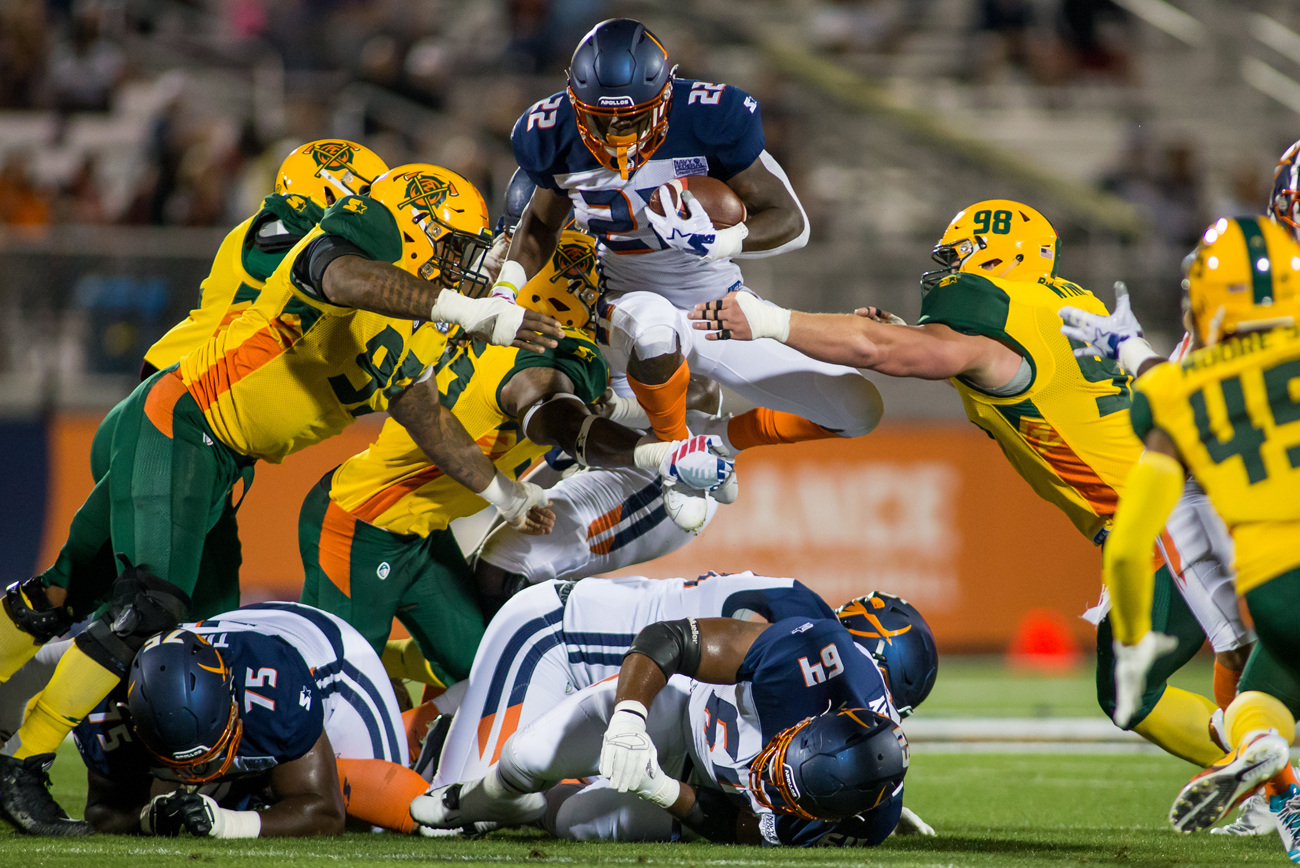
According to multiple people familiar with the AAF’s business operations, the arrival of Dundon (an initial investor candidate who had acquaintances in common with Ebersol) coincided with a difficulty in accessing some of the funds already pledged to the league. Reggie Fowler, once a minority stakeholder in the Minnesota Vikings, had committed to being the Alliance’s primary investor during its first season and had already injected nearly $25 million. But withdrawals from Fowler’s various foreign and domestic banks were suddenly,and without a full explanation to the Alliance’s board, held up around Christmas.
That explanation would come months later. The Department of Justice announced on April 30 that Fowler had been charged with bank fraud and operating an unlicensed money-transmitting business. (Fowler had a detention hearing scheduled for May 2 in Arizona; an Israeli alleged co-conspirator remains at large.) Around the same time that Fowler was theoretically engaging in discussions about funding the new football league, authorities allege he was was also operating “shadow banking services” on behalf of a crypto currency exchange company that misrepresented money transfers and skirted international “anti-money laundering verification services.”
With Fowler’s funds tied up, in stepped Dundon, promising a new $250 million, which it was understood would carry the Alliance through its first three years, under the condition that he be the new primary investor. That agreement, consummated by phone—a shotgun wedding by all accounts—came at an immense cost to Ebersol, who stayed on as CEO but lost his voting seat on the board. (His father, Dick, was also removed.) Dundon would be the AAF’s new controlling owner, and it would show.
The founder of a subprime auto-loan financing outfit, Dundon believed he could maximize the AAF’s returns more quickly. And while some thought the league was over-spending in certain sectors, others recoiled when the new leader went searching for savings under every rock, including revisiting TV and camera-equipment deals that had been built upon the Ebersols’ personal relationships.
One insider says Dundon earned the nickname Trump, based on his slashing of budgets and his hard-liner approach to renegotiating deals. Suddenly the necessity of certain business trips was questioned. Meals were cut from team flights. Every expenditure had to be rationalized. “As soon as Dundon took over,” says one former mid-level employee, “our f------ expense reports were getting approved out of Dallas,” where the billionaire was based.
It may have been due diligence on the television front, however, that eventually helped inform Dundon’s decision to shut it all down before his investment reached nine figures. According to a high-level sports exec from one of the four major networks, Dundon called to ask about the Alliance’s TV future. What he learned: While it wouldn’t necessarily always be this way, the AAF would have to continue paying to be on the air for the foreseeable future. The Alliance would remain an underdog fighting for TV time in a crowded sports marketplace.
If Dundon felt the promise of the league differed from what was delivered, it showed. He took charge of the media messaging, first publicly floating the idea of working with the NFL Players Association as a long-term partner, borrowing from them third- and fourth-string NFL players who could cement the Alliance’s status as a developmental league, and then, on March 27, telling USA Today the league was in danger of folding without such a relationship. (That announcement came as a shock to many in the AAF but would come to be understood as Dundon’s negotiating style.)
And so everyone marched on, pragmatists and dreamers squeezed together, each trying to be the one out front.
In fairness to Tom Dundon, the league he took over in February was already flawed, even if some of those flaws could be spun more positively as quirks. For all of the Alliance’s innovations, one of its most ambitious aspects (especially for a single-entity operation where the league owned each team, like MLS), was its decentralized business model, with employees in 30-plus states. There were core staffers in San Francisco and in Florida, a few people operating out of a small Beverly Hills office, and key cogs in the media relations department working from home, across several time zones.
At his launch press conference in March 2018, Ebersol had addressed the meaning of the league’s name, describing an alliance between “the fans, the players and the game.” Unmentioned went certain lower-profile but equally important elements of the infrastructure. His boldest undertaking might have been in forging bonds between walks of life that have the tendency to ricochet off one another. While employees on both the football and tech sides describe a largely harmonious relationship, for example, sources in each camp blame the other side for extraneous spending and other inconveniences. Like: Why does the football side need new state-of-the-art equipment and an XOS video system? Why does the tech side need all those servers? And, hey, is that engineer really making more money than someone calling the actual plays? One former employee recalls discussions about creating a position to liaise between the tech and football divisions, in order to curb conflict.
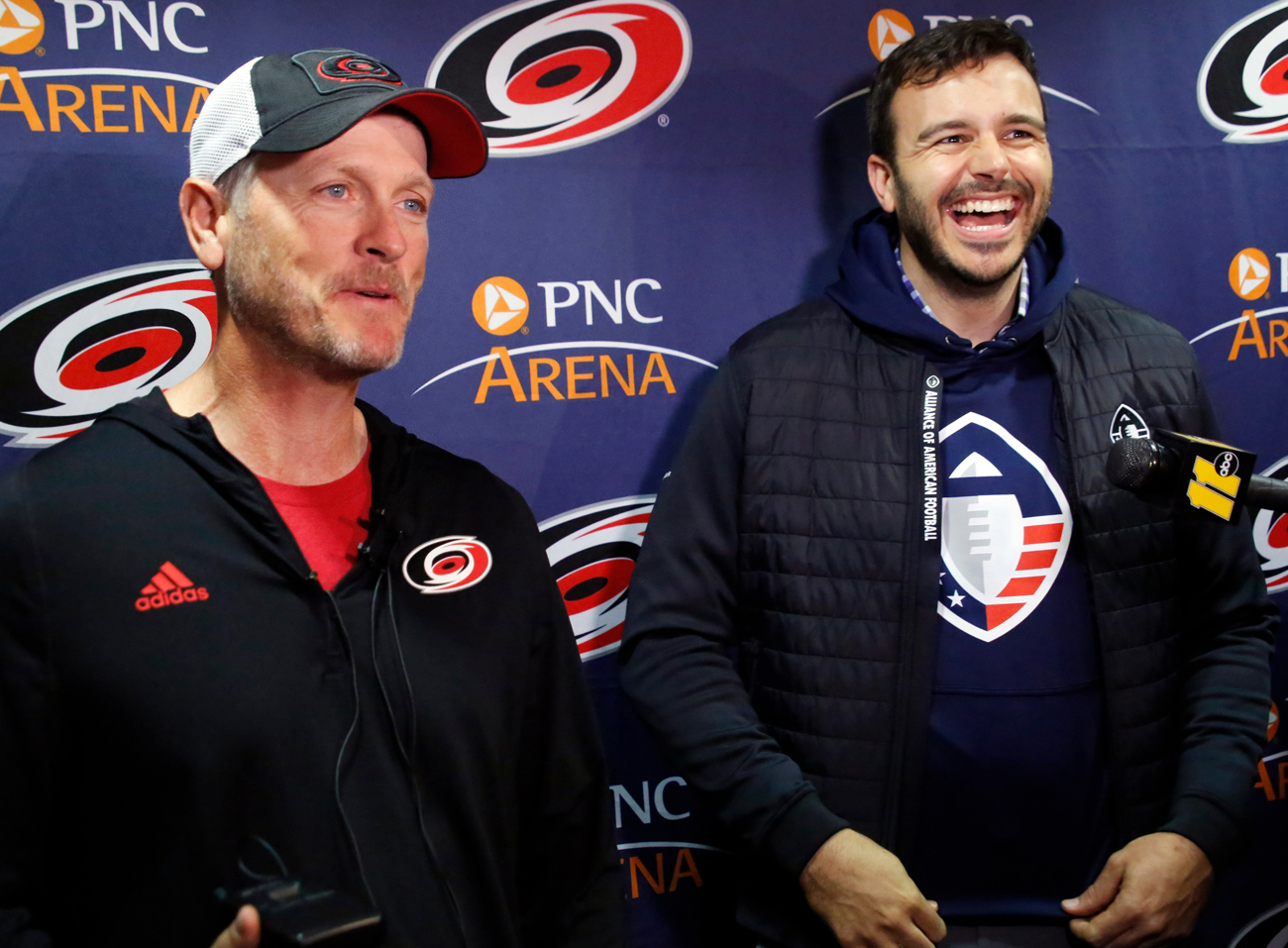
It’s difficult to imagine someone who’s lived by the NFL’s typical rigidity adopting the soul of an iconoclastic tech entrepreneur. But many in the AAF say Ebersol wore that costume well, and perhaps one of his weaknesses as a leader was his trying to give everyone exactly what they wanted. Still, one person who categorized the situation as a “divide” seemed to think Ebersol was closer in his makeup to those who aspired to see the operation into its full potential as a tech company. And there was an aspect of the now-blended Silicon Valley–celebrity culture that could rub some of the more ingrained football people the wrong way. Like when Ebersol was interrupted in a meeting by a call from actor Ashton Kutcher.
Employees on the tech and business sides, meanwhile, seemed to have a better understanding than their football counterparts of the constant pivoting and pinballing that tends to occur in a startup of any kind. In its infancy (even now, some would argue) Facebook was hampered by palace intrigue and technical deficiencies. Early on, Apple, too, was wild enough to warrant a feature film about internal discord. But when you take a startup, which the AAF was built as, and drop in militaristic coaches who wear the same outfit every day and take their coffee at the same time each morning, interruptions in normalcy can, at the least, be a distraction. A few curveballs that caused varying degrees of consternation:
• Brad Childress, an NFL coaching veteran of 20-plus years, inexplicably walked away from his position leading the Atlanta Legends after just three practices. The team promoted defensive coordinator Kevin Coyle, then rolled through a handful of offensive coordinators and advisers: Michael Vick, Ron Turner and, finally, Ken Zampese. One of those coaches was there for mere days; others never made it to the role of play-caller at all.
• According to one employee, the tech side experienced a delay on an order for servers and switched media-storage platforms four times in a two-week period, all before the season started. These little technological shifts were a constant annoyance for the football department, and for those who constantly had to call and explain the new software.
• The league missed payroll by 12 hours after Week 1. And while those on the business side claim this resulted from a change in payroll companies, already some coaches and players were concerned. (It would be reasonable for those on the football side to associate the timing of the delayed paychecks with the disappearance of Fowler’s money and the gap before Dundon came on.)
A successful first few weeks on the field calmed nerves, though, and some of those extraneous issues were buried as coaches and execs found themselves consumed by the weekly grind, lost in the game. That attitude was reflected by the front-office types they had most regular contact with. On March 20, one week before USA Today reported that the league was in danger of folding, the staff received another email from Ebersol, celebrating their one-year anniversary. “This endeavor,” he wrote, “is a tremendous challenge each and every day. We are tested in so many ways we couldn’t even have predicted a year ago. Of course the challenges will continue to appear and each will seem more difficult than the last. . . . Alone some of these challenges would be insurmountable, but together. . . .”
He finished, “I will quote Kevin Garnett. . . . Anything is possible. Good luck this weekend and for many more years to come.”
Players on the Memphis Express were in their locker room getting dressed for a practice near the Liberty Bowl when everything came undone. A few individuals had already started seeing early reports on their phones that the Alliance would suspend operations—then the team’s equipment manager told them all to get to the main building, on the University of Memphis campus, for a meeting. There, coach Mike Singletary, a Pro Football Hall of Famer, instructed everyone to head back to their hotel rooms at the Sonesta ES Suites on Old Poplar Pike Road. They’d figure out the next step.
At the Sonesta, though, hotel staffers told everyone their room bills hadn’t been paid and that they had to pack up and vacate the premises “right now,” remembers one player. A deadline of 30 minutes was set, but eventually a more reasonable solution was settled upon: Stay the night and be gone by 7:30 a.m. Players were in shock. They wandered around the lobby trying to book flights or call their agents. They scrambled to pack their cars.
Adrien Robinson, a fourth-round pick of the New York Giants in 2012, had learned about the league through his girlfriend’s mother—an NFL personnel man had walked into her furniture store one day in Albany, N.Y., back in ’18, and struck up a conversation. Shortly afterward, the 30-year-old tight end left his factory job, tested well at the Alliance combine and landed a spot with the Express. It was a godsend for his family, with two young girls and a son on the way. Over eight games with Memphis, Robinson caught seven of eight targets for 40 yards, finally giving him a bit of recent film to circulate to the NFL.
That fleeting bit of progress flashed across his mind as he opened up a notification on his Teamworks app that afternoon in the Sonesta lobby. A message from an assistant on Memphis’s operations team told him, “You need to pack up tonight and leave tomorrow. . . . It was my pleasure working with you. I wish you success in the future.”
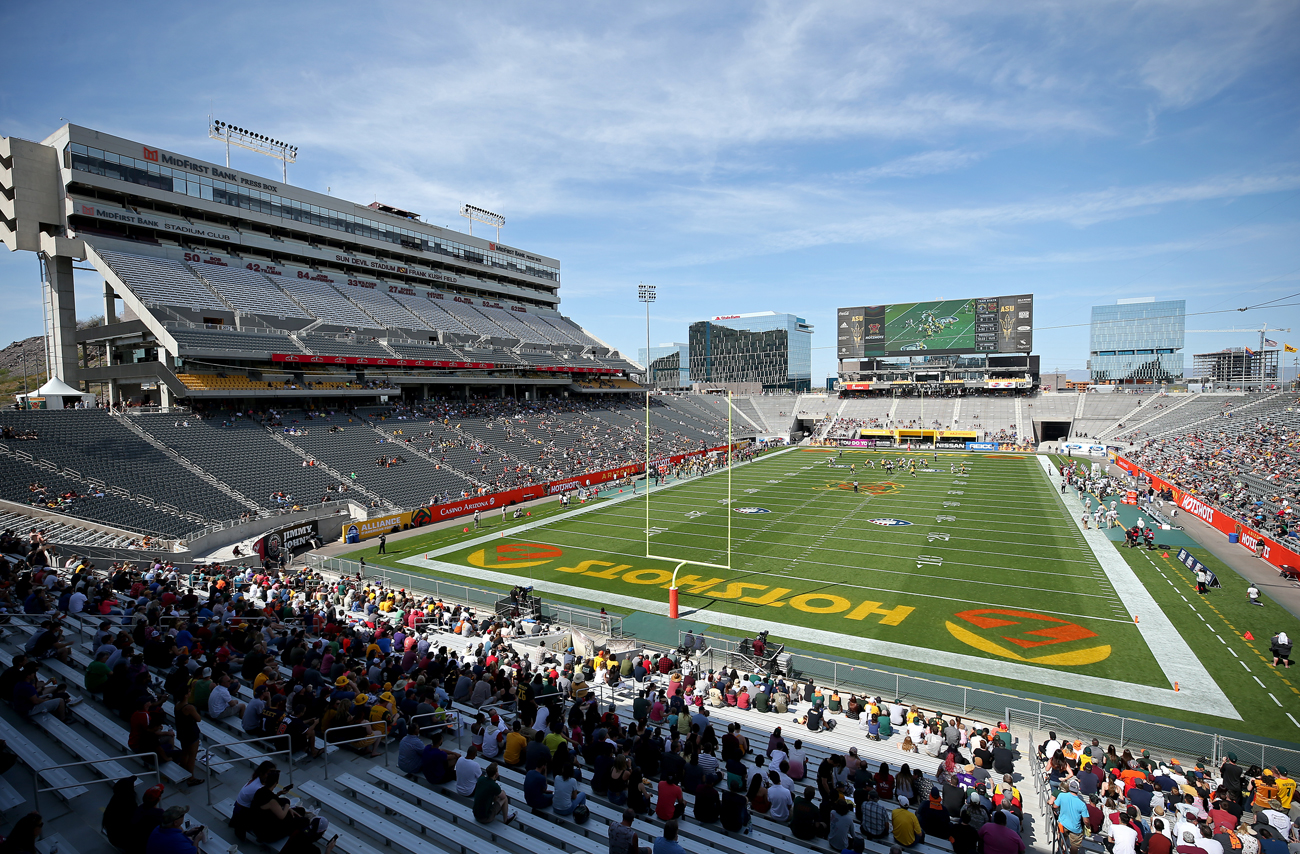
Robinson’s headaches were only beginning. The next morning he woke up to a $2,500 charge on the credit card he’d put down for hotel incidentals. For players, free housing had been promised to anyone willing to have a roommate, but now it looked like the hotel was simply taking any card on file and hitting it with the entire bill. Robinson called his own bank and was told the charges were pending; there was nothing they could do yet. He dialed the personnel assistant who’d sent the message about leaving the hotel, but no one answered.
As Robinson’s debacle played out live on Twitter—along with those of now-jobless players hustling for the airport, guys with broken bones wondering who’d fix them up—the saga privately carved the hearts out of those who still believed in the Alliance. Even for anyone who saw the AAF as a startup tech company, trust and respect had been earned by some pretty high-minded, egalitarian ideas. Now, none of that mattered, even if, after some early confusion, medical services were made available through April. Even if everyone (stadiums and vendors aside) eventually got paid—or paid back, in the case of Sonesta’s hotel guests. Even if the tech they were developing finds its way into our football lives sometime soon. For this moment, the Alliance was the Fyre Festival.
Which, again, was . . . whose fault? There may never be a satisfying answer. Perhaps, once all the brand-new football equipment and high-end cameras are auctioned off a few weeks from now as part of the AAF’s Chapter 7 proceedings, and once Fowler’s court case is adjudicated, everyone will move on. (Fowler’s charges of bank fraud and conspiracy to commit bank fraud each carry a maximum of 30 years in prison; charges of operating an unlicensed money transmitting business and conspiracy to operate such a business each carry a five-year max.) What’s left, the words and actions of millionaires and billionaires trying to control the narrative (Dundon and Ebersol declined to comment for this story; Fowler did not respond to calls before his arrest), won’t do much, anyway.
Not for the players, the low-level coaches and mid-level office employees who thought they’d latched onto something real, and who now can’t even get COBRA to continue their health insurance. Not for people like Robinson, who ultimately packed his things and headed home to Albany, hoping the next new spring league might have a spot for him. February will see the launch of the rebooted XFL. Whatever that ends up being.
Question or comment? Email us at talkback@themmqb.com.
